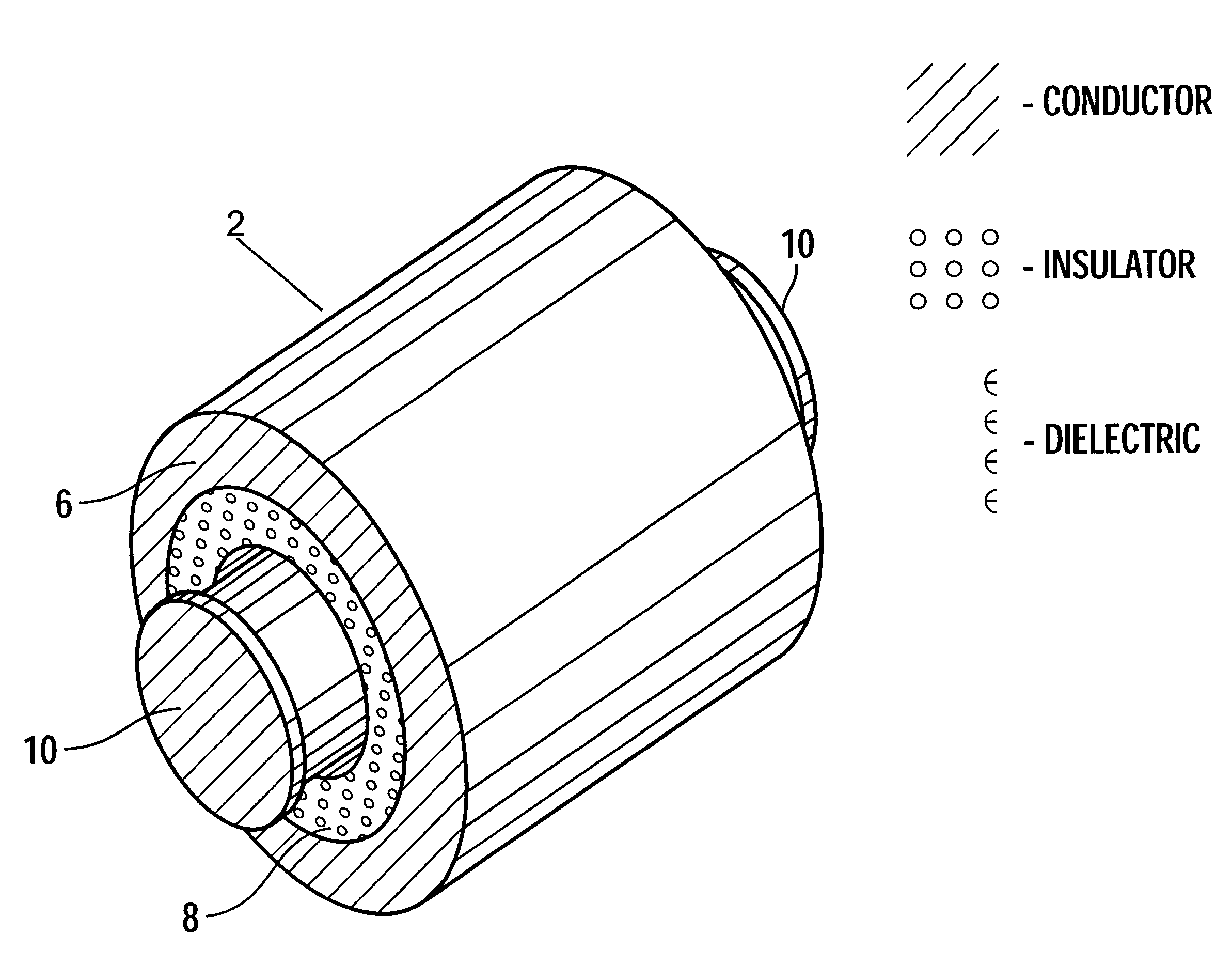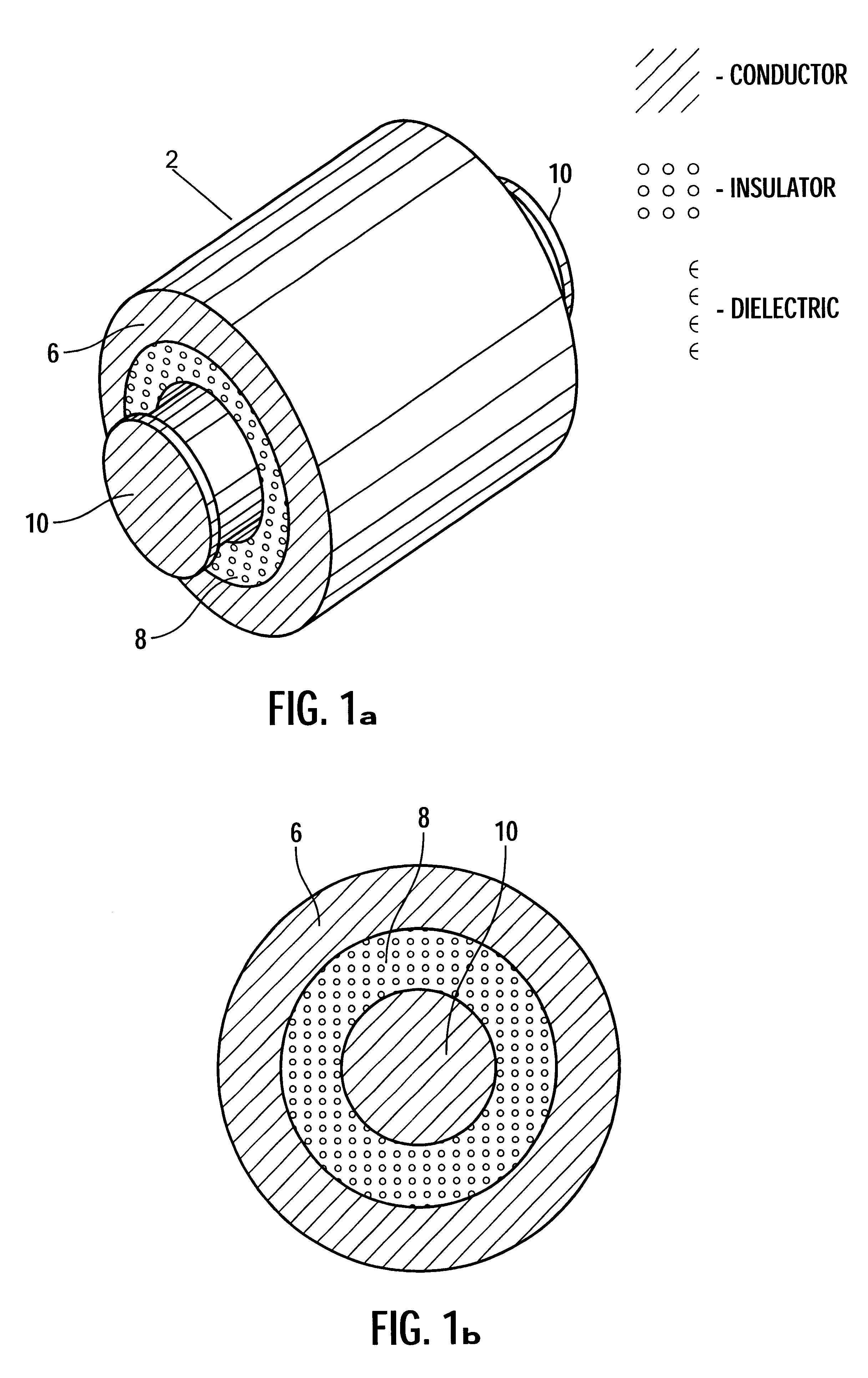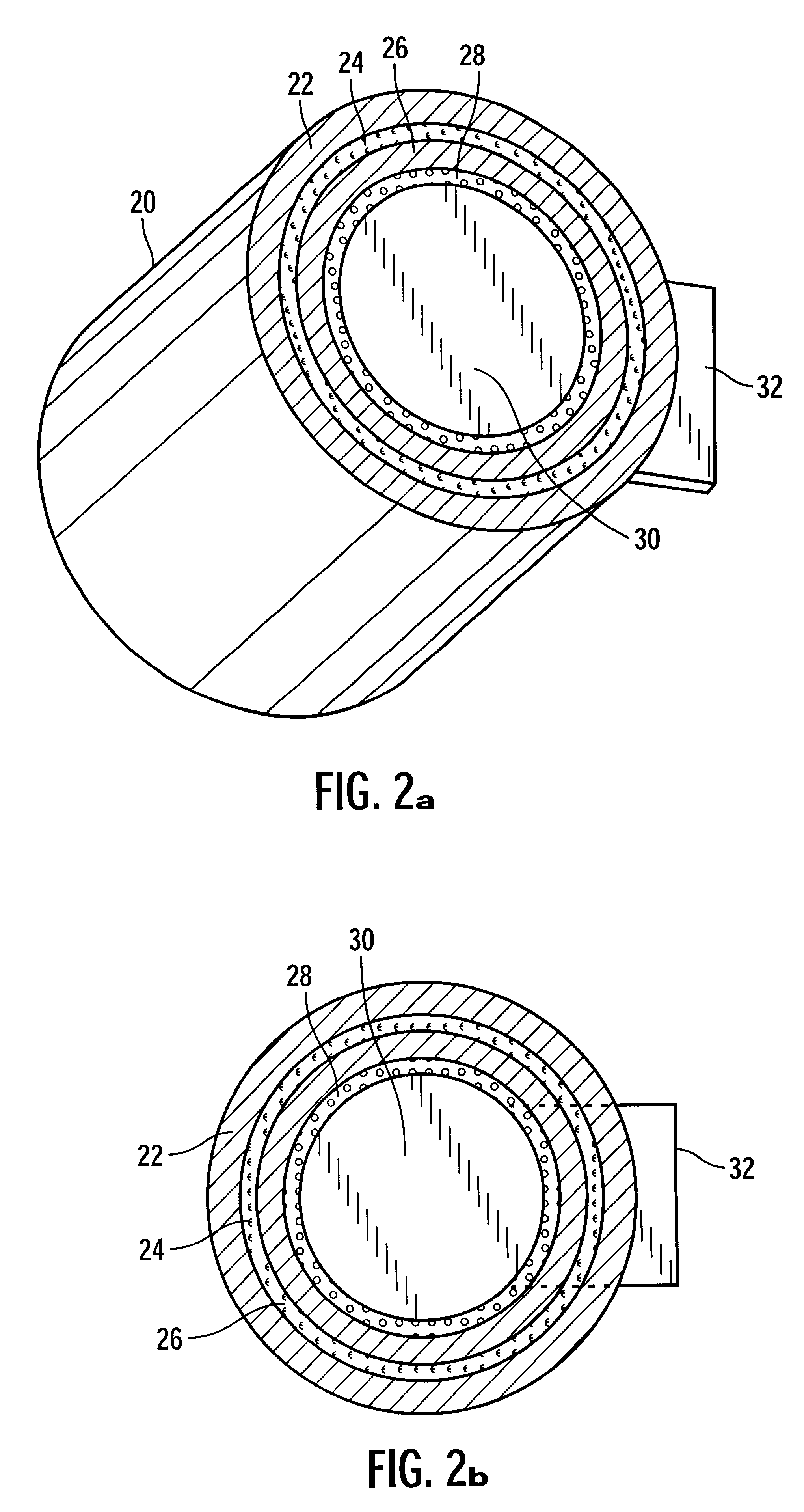Via structure with dual current path
a current path and structure technology, applied in the field ofvia structure, can solve the problems of corresponding increase in inductance and, hence, electronic emissions, interference with other signals in the system, increased emissions and noise cross-talk,
- Summary
- Abstract
- Description
- Claims
- Application Information
AI Technical Summary
Benefits of technology
Problems solved by technology
Method used
Image
Examples
first embodiment
FIG. 1a illustrates a perspective view of a via structure in accordance with the present invention;
FIG. 1b illustrates a cross-sectional view perpendicular to the axis of the via structure shown in FIG. 1a;
second embodiment
FIG. 2a illustrates a perspective view of a via structure in accordance with the present invention;
FIG. 2b illustrates a cross-sectional view perpendicular to the axis of the via structure shown in FIG. 2a;
FIG. 3 illustrates a perspective view of the via structure of FIGS. 1a, b disposed through layers;
FIG. 4 illustrates a cross-sectional view along the axis of the via structure shown in FIG. 1a; and
FIGS. 5-9 illustrate cross-sectional views along the axis of alternative embodiments of the via structure.
In the following description, reference is made to the accompanying drawings which form a part thereof and which illustrate several embodiments of the present invention. In the drawings, depicted elements are not necessarily drawn to scale and like or similar elements may be designated by the same reference numeral throughout the several views. Further, it is understood that other embodiments may be utilized and structural and operational changes may be made without departing from th...
PUM
 Login to View More
Login to View More Abstract
Description
Claims
Application Information
 Login to View More
Login to View More - R&D
- Intellectual Property
- Life Sciences
- Materials
- Tech Scout
- Unparalleled Data Quality
- Higher Quality Content
- 60% Fewer Hallucinations
Browse by: Latest US Patents, China's latest patents, Technical Efficacy Thesaurus, Application Domain, Technology Topic, Popular Technical Reports.
© 2025 PatSnap. All rights reserved.Legal|Privacy policy|Modern Slavery Act Transparency Statement|Sitemap|About US| Contact US: help@patsnap.com



